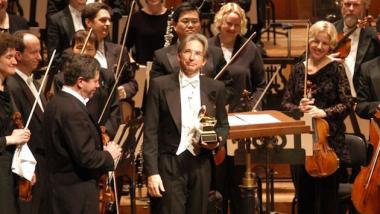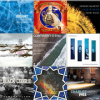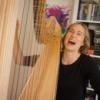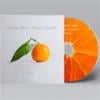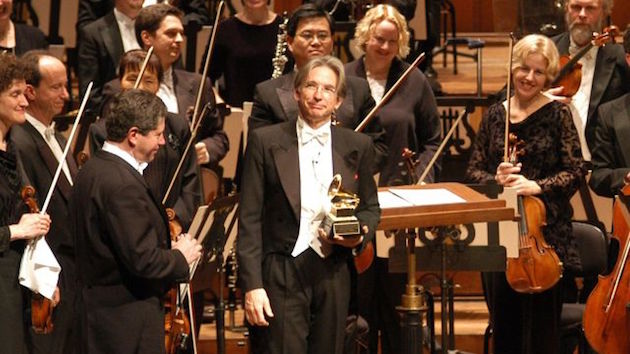
Far from being MIA on the recording scene, some American orchestras still have active recording agendas, often on their own in-house labels. Granted it’s not like it was in the first LP era, when ensembles like the New York Philharmonic and Philadelphia Orchestra could have several releases each out within just a month. But there is enough to keep collectors going.
The San Francisco Symphony is limiting its physical releases these days to one item per year in the fall, dribbling out other recordings at other times of the year only as downloads. They have a surefire winner with the orchestra’s latest disc, a coupling of Charles Ives’s pastoral Symphony No. 3 and alternately stone-crazy and transcendent Symphony No. 4 (SFS Media SFS-0074, SACD). It’s a surefire thing because Michael Tilson Thomas is our pre-eminent guide to the cantankerous, spiritual, clashing, nostalgic, all-embracing world of this American original.
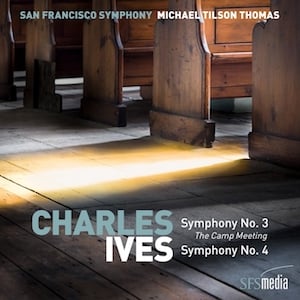 MTT has recorded these symphonies before, in the 1980s, as part of his Ives symphony cycle for CBS (now Sony) — No. 3, somewhat surprisingly, with the Amsterdam Concertgebouw Orchestra and No. 4 with the Chicago Symphony. These San Francisco live recordings don’t alter his approach all that much from three decades ago: the second movement of No. 3 is noticeably slower now while the finale of No. 4 is somewhat faster. Yet as before, Tilson Thomas has an exuberant mastery of all the aspects and contradictions of Ives, treated to perhaps the finest engineering these pieces have ever received.
MTT has recorded these symphonies before, in the 1980s, as part of his Ives symphony cycle for CBS (now Sony) — No. 3, somewhat surprisingly, with the Amsterdam Concertgebouw Orchestra and No. 4 with the Chicago Symphony. These San Francisco live recordings don’t alter his approach all that much from three decades ago: the second movement of No. 3 is noticeably slower now while the finale of No. 4 is somewhat faster. Yet as before, Tilson Thomas has an exuberant mastery of all the aspects and contradictions of Ives, treated to perhaps the finest engineering these pieces have ever received.
The new recordings (as heard in the SACD format) have a deeper, warmer sound that nevertheless allows us to hear the gears within gears turning in the more complex passages of No. 4. While I miss the brazenly brash playing of the Solti-era Chicago ensemble in the tumultuous second movement of No. 4, the San Franciscans play superbly well with just enough pizzazz, and you can hear much more going on within its impossibly complex collisions. As on the Chicago recording, MTT includes a selection of hymns that inspired Ives as a preface to the Symphony No. 4 and does the same for the Symphony No. 3 (which he didn’t do in Amsterdam), lovingly sung by Ragnar Bohlin’s San Francisco Symphony Chorus.
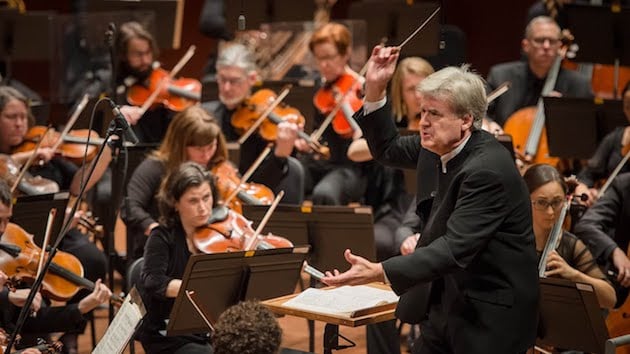
Thomas Dausgaard, the new Seattle Symphony music director, has long been one of the most prolific champions of music from his homeland, Denmark, and clearly he intends to carry on that mission. He has already started a Nielsen symphony cycle in Seattle with excellent performances of the Symphonies 3 and 4. And with this CD, issued on the orchestra’s house label (SS Media SSM 1023), Dausgaard comes up with a coupling that so far has eluded everyone. In other words, what do Richard Strauss and the Danish maverick Rued Langgaard (1893-1952) have in common?
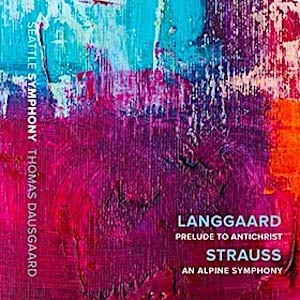 Turns out that they both wrote pieces that summon the image of the Antichrist — Langgaard in an opera titled Antichrist, while Strauss’s mighty Alpine Symphony was originally titled Alpine Symphony for the Antichrist. A cheery contrarian coupling issued in time for the Christmas season, no?
Turns out that they both wrote pieces that summon the image of the Antichrist — Langgaard in an opera titled Antichrist, while Strauss’s mighty Alpine Symphony was originally titled Alpine Symphony for the Antichrist. A cheery contrarian coupling issued in time for the Christmas season, no?
While Dausgaard has recorded all of Antichrist — he led the belated world premiere half a century after the composer’s death — here, he just gives us the Prelude, which itself is a strange, fascinating 12 1/2-minute piece. Two developing passacaglias using similar material — one for strings, the other for winds — mysteriously vanish into the ether. Then a pounding crescendo passage leads to a big brass chorale before that, too, subsides. The language is unlike that of any other composer — tonal, quirky — and it makes one want to hear more.
Dausgaard shows that he has a firm grip on the structure of the Alpine Symphony, patiently building his climaxes. The notorious storm sequence must have been a terrifying thriller when the orchestra played it live in Benaroya Hall, with the fierce depiction of howling winds and a shattering final climax. But the sound on the CD — as heard on two different sound systems — is congested, muffling the performance’s impact, and the Seattle Symphony’s playing is not always the last word in precision. Still, this disc can be recommended as a pointer toward great things to come alongside Puget Sound.
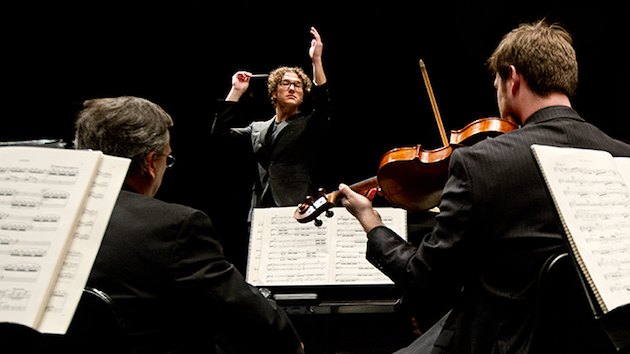
While some orchestras brag that they were early adopters in the rush to start their own labels, the Louisville Orchestra was actually the first to do so, pouring out reams of newly commissioned pieces on its First Edition label starting in 1948. After a long dormant period, its young music director Teddy Abrams revived the Louisville’s presence on recordings, but with some differences. The obvious one is that the LO is releasing its music through the giant Universal Music Group, not its own label. The other is Abrams’s feverishly polystyled bent, taken to a new level in The Order of Nature (Decca Gold B0030960-02).
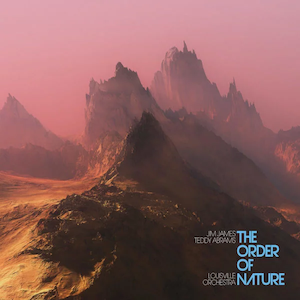 Here, Abrams took some simple demos from Jim James, singer/guitarist with the band My Morning Jacket, plus a couple of songs recorded by Nina Simone, and fashioned an elaborate, continuous orchestral suite with an attitude that nothing is too extravagant, too over-the-top, or too all-embracing in order to proclaim that hatred is against the natural order of things. It’s sort of like Ives, except that Abrams tries to make alien idioms work together in the spirit of James’s pleas, avoiding Ivesian collisions.
Here, Abrams took some simple demos from Jim James, singer/guitarist with the band My Morning Jacket, plus a couple of songs recorded by Nina Simone, and fashioned an elaborate, continuous orchestral suite with an attitude that nothing is too extravagant, too over-the-top, or too all-embracing in order to proclaim that hatred is against the natural order of things. It’s sort of like Ives, except that Abrams tries to make alien idioms work together in the spirit of James’s pleas, avoiding Ivesian collisions.
Though James’s plaintive vocals, some occasional rock drumming, and doo-wop chords bring to mind shotgun fusions of rock and the classics that symphony orchestras sometimes do, The Order of Nature differs from them in the intricate textures of Abrams’s orchestrations that give his players something to dig into, as well as a coherent overall structure and flow to the suite. One of the Simone songs turns out to be Leonard Bernstein’s wistful “Who Am I?” (from his 1950 version Peter Pan, not the 1954 musical with Mary Martin), in which James is accompanied sensitively by Abrams on the piano.
The Order of Nature is so vigorously aimed at young vinyl fans that even the packaging of the CD — a gatefold jacket with no print on the front cover, a couple of mini-posters packed inside, one with song lyrics on the back — resembles those of hit rock albums from the 1970s. The whooping of what sounds like a young crowd at the live concert — recorded in one take, we’re told — suggests that they’re hitting the target.

